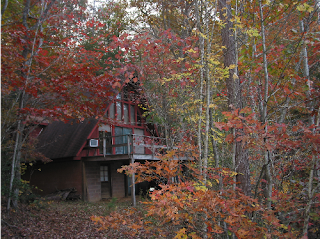
Many towns in the Southern Appalachians have one or two outfitter stores that are stocked with gear and staffed by people who can tell you about recreational opportunities in the area.
In my experience, every one of these stores is good -- but that does not mean they are all equal. Outdoor 76 opened one year ago in downtown Franklin, North Carolina, and if you are ever in the southwestern part of that state (or the northeastern part of Georgia) you should be certain to stop in.

Franklin is surrounded by Nantahala National Forest and within 30 miles of both Great Smoky Mountains National Park and Chattahoochee National Forest. Miles upon miles of hiking trails, including the famous Appalachian Trail, can be accessed within a short drive of town; and in fact, Franklin is officially designated as an Appalachian Trail Community.
In addition to hiking, it is close to many places where you can engage in kayaking, whitewater rafting, rock climbing, laid-back “car camping,” and tubing (both on water and on snow), so you should have no doubt that it is a good place to visit if you like doing things outside.

Sure, when you are planning an outdoors exploit you can walk into your local Sports Authority, grab something off the shelf, perhaps cheaply, and be on your way. But if you want to select the right item, if you want to marry quality with price in making your decision, you won’t be likely to find any employees with the expertise to help you. Such is not the case at Outdoor 76, because its people have decades of combined experience venturing in the wild and using the items they sell.
The selection of high performance brands available here is impressive, with footwear from the likes of Keen and Salomon; clothing from Patagonia and Mountain Hardware; kayaks from Perception; backpacks from Marmot and Osprey; and backcountry stoves from Mountain Safety Research…and that sampling does not even begin to scratch the surface.

One thing that separates this merchant from the vast majority of outdoor retailers is that they not only sell gear, but rent it as well. If you have never been backpacking but want to give it a try -- but don’t want to shell out hundreds of dollars on a pack, hundreds more on a tent, and untold hundreds more on all the gear and accessories that are required before you even know if you will like the experience -- then this is absolutely the place for you. They will rent you gear at outstanding rates, make sure you have all the small but crucial items that are easy to overlook, and direct you to a trail route that is perfectly fitted to your experience and level of fitness.
Which leads me back to Outdoor 76’s greatest asset: Its people. The store’s web site says they will steer you right whether you are seeking only “a brief, quiet stroll” or “a multi-day expedition.” It says they “are committed to meeting your technical needs on the trail and your lifestyle off the trail,” and that they can help you “choose your adventure within almost any budget.” And when you visit the store you will quickly realize those words are true.

When some friends and I were there earlier this month, one of the owners, Rob Gasbarro, had dropped some customers off at the Appalachian Trail that morning. I mentioned to one of my friends that in lieu of our annual backpacking trip, next year we should consider making our first kayak camping trip. I then suggested that we make Fontana Lake the site of the trip, at which point Gasbarro pointed out that South Carolina’s Lake Jocassee might be a better option. He did that despite knowing that Fontana is not a bad option and that people going to Jocassee are heading to a location that makes them much less likely to patronize his store than if they are going to Fontana.
Outdoor 76 is the brainchild of Gasbarro and Cory McCall, and they are doing everything right for a new business. As you make your way toward downtown Franklin, you will see the store’s name on a few billboards -- enough of them that you notice, all done up in a way that piques your interest without any of the overkill that might turn you off. In a particularly good move for a new kid on the block, Outdoor 76 recently hosted one of the region’s largest outdoor festivals.
For these men to open a new business in a small town in today’s economic times, and to go about it so well, shows that the American spirit of daring, principled entrepreneurism remains alive. With their focus on all aspects of customer service, the people at Outdoor 76 make it easier to experience America’s beauty and wonder. If you pass within Franklin’s vicinity, do not cheat yourself by failing to take advantage of what they have to offer.
For more information, you may visit their web site, follow them on Facebook, or call them at 828-349-7676. And take note that they will soon be selling merchandise online.

Note: I became aware of Outdoor 76 because I used to work with Rob Gasbarro’s wife back before they escaped Florida and settled in “God’s country”…but I have traveled extensively in the Southern Appalachians and would not have written this post if I did not know it to be true based on my experiences.
















.jpg)











































